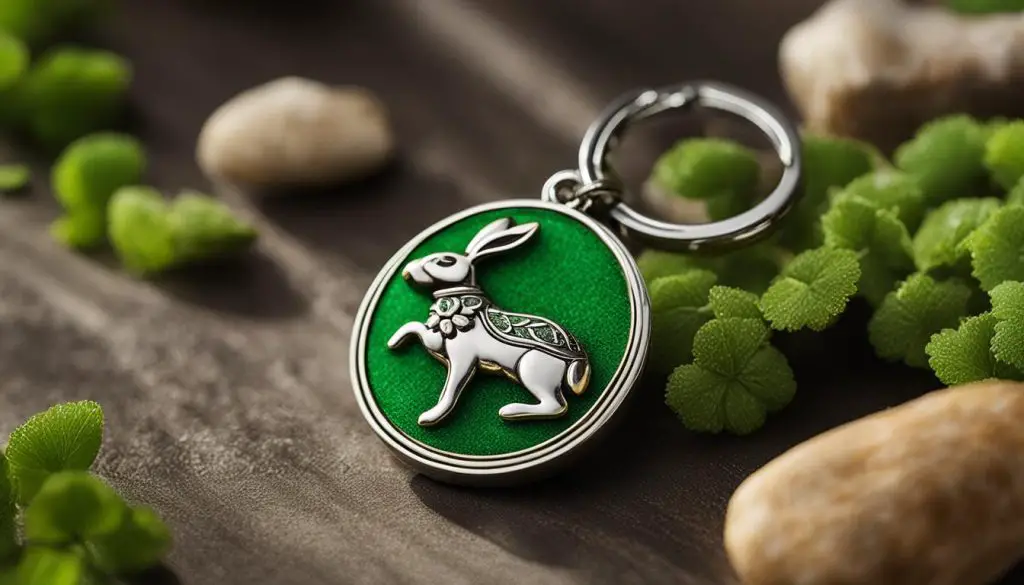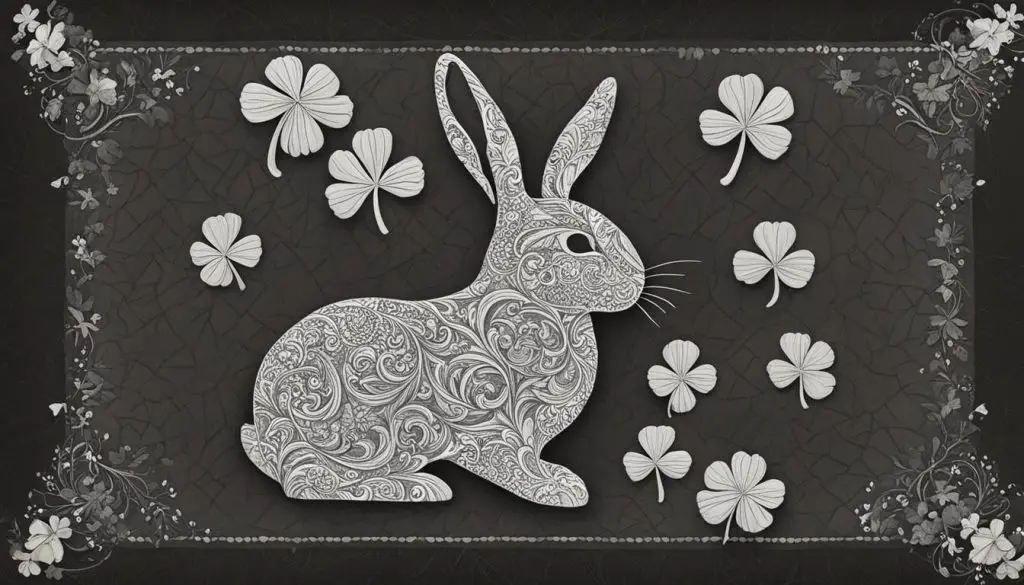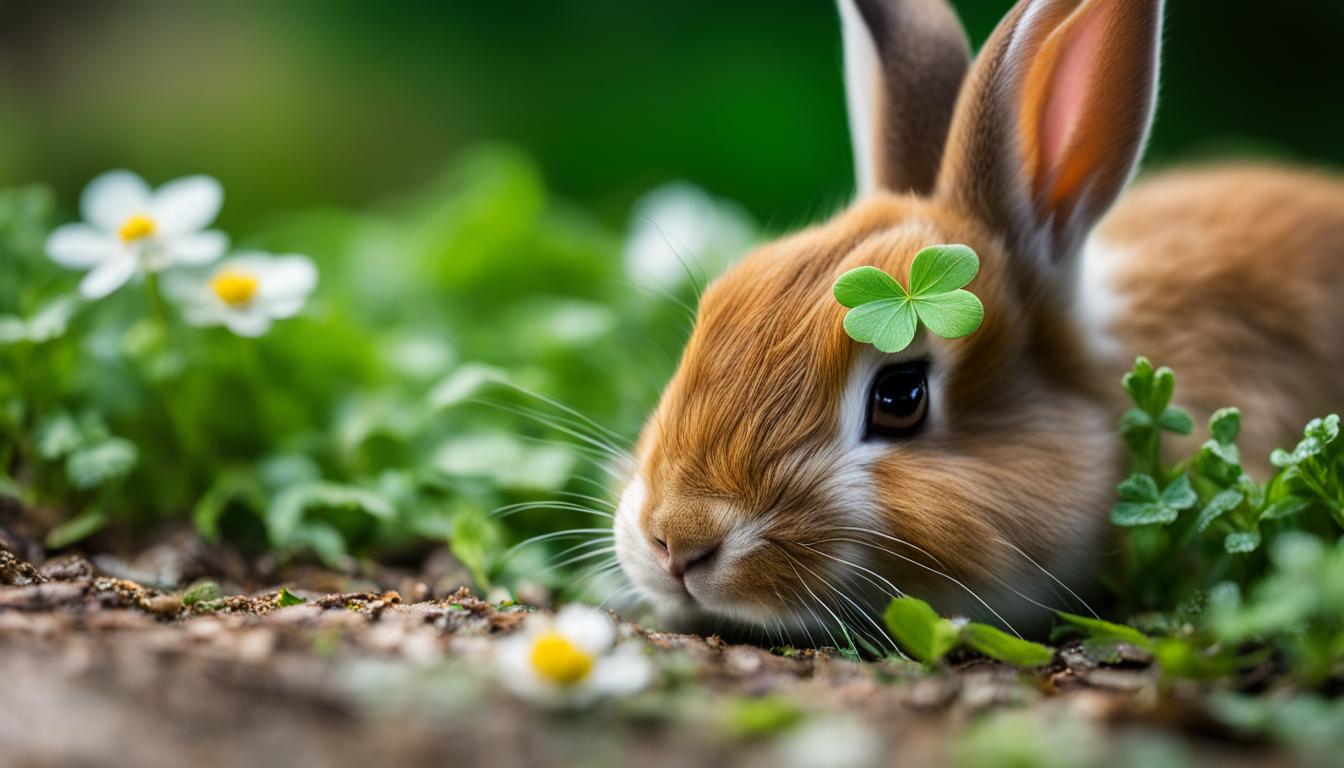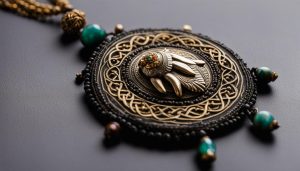Carrying a rabbit’s foot as a good luck charm is a well-known superstition, but the origin and significance of this belief remain a subject of debate. The practice of carrying a rabbit’s foot for good luck can be traced back to early 20th-century America, where it became associated with various Anglo-American and African American superstitions.
While the exact reasons behind this association are unclear, folklore scholars suggest that it may have originated from a mix of sources, including European and African traditions. The popularity of rabbit’s foot charms can be attributed to their perceived power to ward off evil or neutralize the threat represented by a dangerous “Other.” Despite its uncertain origins, the rabbit’s foot remains a widely recognized symbol of good luck.
Contents
- 1 The History of the Rabbit’s Foot Superstition
- 2 The Cultural Significance of Rabbit’s Feet
- 3 The Origins of Saying “Rabbit Rabbit” for Good Luck
- 4 Conclusion
- 5 FAQ
- 5.1 What is the origin of the belief in the luckiness of rabbit’s feet?
- 5.2 Why do people believe rabbit’s feet bring good luck?
- 5.3 What are the cultural associations and symbolism of rabbit’s feet?
- 5.4 What is the origin of saying “rabbit rabbit” for good luck?
- 5.5 Why do people carry lucky tokens like rabbit’s feet?
- 5.6 Why do rabbit’s foot superstitions persist despite the lack of evidence?
- 5.7 Are there controversies surrounding rabbit’s foot superstitions?
- 5.8 Why do people continue to believe in the luckiness of rabbit’s feet?
- 6 Source Links
Key Takeaways:
- The belief in the luckiness of rabbit’s feet dates back to ancient Rome.
- Rabbit’s feet have significant cultural and symbolic associations.
- The origin of saying “rabbit rabbit” for good luck on the first day of the month is unclear.
- Lucky tokens, such as rabbit’s feet, hold magical properties and social power.
- The belief in lucky tokens and superstitions persists despite the lack of concrete evidence.
The History of the Rabbit’s Foot Superstition
The belief in the luckiness of rabbit’s feet dates back to ancient Rome. In 77 AD, Pliny the Elder mentioned that carrying around a hare’s foot could cure gout. In the 16th through 19th centuries, Europeans carried hand-cut paws from hares, rabbits, and moles as protective talismans against various ailments.
The practice of carrying a rabbit’s foot as a lucky charm gained momentum in the United States during the early 20th century. The rabbit’s foot became associated with both Anglo-American and African American folklore and superstitions. The foot’s origins on a grave site, the timing of the killing, and the association with a person of ill repute were believed to enhance its luck-bringing powers.
The rabbit’s foot’s charm lied in its ability to harness the essence of a dangerous “Other” and use it for one’s own purposes, neutralizing the threat represented by that “Other.”
| Lucky Tokens | Origin | Superstition |
|---|---|---|
| Rabbit’s Foot | Ancient Rome | Believed to bring good luck and cure ailments |
| Rabbit’s Paw | 16th – 19th centuries Europe | Carried as a protective talisman against ailments |
“The rabbit’s foot’s charm lied in its ability to harness the essence of a dangerous ‘Other’ and use it for one’s own purposes, neutralizing the threat represented by that ‘Other.'”
Rabbit Foot Superstitions
- Carrying a rabbit’s foot as a lucky charm originated from ancient Rome
- 16th – 19th-century Europeans carried hand-cut paws from hares, rabbits, and moles for protection
- Early 20th-century United States saw the rise of rabbit’s foot superstitions associated with graves, timing of killing, and connection to people of ill repute
The history of the rabbit’s foot superstition is rich and varied. From ancient Rome to the present day, people have believed in the luckiness of carrying a rabbit’s foot. The practice can be traced back to Pliny the Elder’s mention of a hare’s foot curing gout, and European traditions of carrying animal paws as protective talismans against ailments.
In the United States, the rabbit’s foot superstition gained popularity in the early 20th century, becoming associated with both Anglo-American and African American folklore. The foot’s perceived powers were enhanced by its origins on a grave site, the timing of the killing, and its association with individuals of ill repute. The belief that the rabbit’s foot could harness the essence of a dangerous “Other” and neutralize its threat made it a powerful charm for good luck.
Today, the rabbit’s foot superstition continues to captivate and intrigue. The history and cultural significance of this belief shed light on the human fascination with luck and the desire for protection and good fortune. Whether you believe in the magical powers of the rabbit’s foot or simply appreciate its symbolism, it remains an enduring symbol of good luck in popular culture.
The Cultural Significance of Rabbit’s Feet
Rabbit’s feet have significant cultural and symbolic associations. In European traditions, witches were believed to transform into animals, including rabbits, making a rabbit’s foot symbolic of a dead witch. Another European superstition related to the rabbit’s foot is the Hand of Glory, a hand cut from a dead man and pickled to turn it into a candle. Thieves would light this hand to prevent the people in a house from waking up while committing crimes. The rabbit’s foot, especially when associated with a grave site, could be seen as a substitute for using human body parts as powerful talismans, which was considered taboo. The use of body parts, including hair and bones, took on potent symbolism in both European and African traditions. The rabbit’s foot, as a counterculture talisman, was able to subvert evil and transform it through its existence. These symbolic associations contribute to the belief in the luckiness of rabbit’s feet.

In African American folklore, rabbits hold a special place as tricksters and bringers of good luck. The rabbit’s foot, as a symbol of the rabbit’s cunning and ability to outwit adversaries, is believed to imbue its owner with similar traits. It is seen as a charm that brings good fortune, protection, and the ability to navigate through challenging situations. This cultural significance is deeply rooted in African American history and traditions, where the rabbit’s foot stands as a reminder of resilience and the power to overcome obstacles.
Rabbit Symbolism in Luck
Across various cultures, rabbits have been associated with luck, fertility, and abundance. Their ability to reproduce quickly and the symbolism of new life in spring connects them to themes of growth and prosperity. This association has led to the rabbit’s foot becoming a popular lucky charm, believed to attract good fortune in different aspects of life. Whether it is carried as a personal talisman or used in rituals and ceremonies, the rabbit’s foot charm holds a deep-seated belief in its ability to bring luck and positive outcomes.
Furthermore, the use of rabbit’s feet as lucky tokens is not limited to specific cultures or regions. It has transcended geographical boundaries and become a widely recognized symbol of good luck in many parts of the world. Whether worn as jewelry, carried in pockets, or displayed in homes, the rabbit’s foot charm continues to hold cultural significance and remains a beloved lucky charm for many people.
The Origins of Saying “Rabbit Rabbit” for Good Luck
The saying “Rabbit Rabbit” for good luck on the first day of the month is an interesting superstition that has been passed down through generations. While the exact origin of this saying remains unclear, it has persisted over the years and gained popularity among individuals from various backgrounds. Some speculate that the association between rabbits and good luck stems from their reputation for fertility and their connection to spring and renewal. The act of saying “Rabbit Rabbit” at the beginning of the month is believed to bring good fortune and ward off any potential bad luck that may come your way.
Although the earliest written mention of this saying dates back to a 1909 issue of the British journal Notes and Queries, the tradition has endured and continues to be followed by many to this day. Famous individuals like President Franklin Delano Roosevelt and actress Sarah Jessica Parker are known to have followed this superstition, adding to its popularity and intrigue.
While the exact connection between saying “Rabbit Rabbit” and the superstitions surrounding rabbit’s feet is unclear, both traditions share a belief in the power of these furry creatures to bring good luck. It is fascinating how folklore and superstitions continue to shape our beliefs and practices, even in the modern age.
The Power of Rabbit Folklore for Good Luck
Rabbits have long been associated with luck, fertility, and abundance in folklore and mythology. In many cultures around the world, rabbits are seen as symbols of prosperity and good fortune. Their ability to multiply quickly and their association with the spring season, a time of renewal and growth, have contributed to their lucky reputation.
“The rabbit, symbol of abundance, is also associated with the moon, which represents the cyclical nature of life and the ebb and flow of fortune.”
It is no wonder that the saying “Rabbit Rabbit” has become a popular way to invoke luck at the start of each month. By channeling the positive energy and associations connected to rabbits, individuals hope to attract good fortune and positive experiences throughout the coming weeks.
| Month | Luck |
|---|---|
| January | Renewal and fresh beginnings |
| February | Love and romance |
| March | Abundance and prosperity |
By following the tradition of saying “Rabbit Rabbit” on the first day of the month, individuals not only embrace an age-old superstition but also tap into the power of rabbit folklore to bring good luck into their lives.

| Pros | Cons |
|---|---|
| Symbol of good luck in many cultures | Ethical concerns regarding the use of animal body parts |
| Personal meanings and cultural value attached to the belief | Debate surrounding the authenticity of marketing claims |
| Continued popularity and tradition despite uncertainties | Divisiveness among scholars and researchers |
Despite the controversies and uncertainties surrounding rabbit’s foot superstitions, it continues to hold cultural significance and capture the fascination of many individuals. Whether it is seen as a symbol of good fortune, a talisman to ward off evil, or a personal belief system, the rabbit’s foot remains a cherished artifact in the realm of superstitions. In the end, the power and meaning attributed to these lucky charms ultimately lie in the hands of those who believe in their luck-bringing properties.
Conclusion
The belief in the luckiness of rabbit’s feet and the superstitions surrounding them have been part of human culture for centuries. The rabbit’s foot charm continues to be recognized as a symbol of good luck, despite the controversy and uncertainty surrounding its origins. Whether it is believed to harness the essence of a dangerous “Other,” counteract negative forces, or simply bring good fortune, the rabbit’s foot holds cultural significance and personal meaning for many.
Throughout history, rabbit folklore has intertwined with beliefs in luck and protection. From ancient Rome to modern-day America, the rabbit’s foot has been viewed as a talisman with mystical powers. While the exact reasons behind this belief remain unclear, the enduring popularity of the rabbit’s foot superstition speaks to the enduring human fascination with luck and the desire for protection and good fortune in various aspects of life.
So, whether you choose to carry a rabbit’s foot for good luck or not, the rabbit’s foot charm will continue to be an intriguing part of our cultural fabric. Its symbolism and associations with luck and protection make it a fascinating and enduring aspect of folklore. While the debate about its origins and effectiveness may continue, the rabbit’s foot for good luck remains a symbol of hope and optimism for many.
FAQ
What is the origin of the belief in the luckiness of rabbit’s feet?
The origin of the belief in the luckiness of rabbit’s feet is unclear, but it can be traced back to early 20th-century America and various Anglo-American and African American superstitions.
Why do people believe rabbit’s feet bring good luck?
The belief in the luckiness of rabbit’s feet can be attributed to their perceived power to ward off evil or neutralize threats. The foot’s association with danger, the deceased, and various superstitions contributes to this belief.
What are the cultural associations and symbolism of rabbit’s feet?
In European traditions, rabbit’s feet are associated with witches and the Hand of Glory, a protective talisman used by thieves. The use of rabbit’s feet is seen as a substitute for using human body parts as charms, which was considered taboo.
What is the origin of saying “rabbit rabbit” for good luck?
The origin of saying “rabbit rabbit” for good luck on the first day of the month is unclear. It may date back to a 1909 issue of the journal Notes and Queries, where children were observed saying “rabbits” for good luck.
Why do people carry lucky tokens like rabbit’s feet?
Carrying lucky tokens like rabbit’s feet is often associated with a belief in the need for fortune or as a way to counteract perceived bad luck. The power of rabbit’s feet as tokens stems from their association with danger, the deceased, and superstitions.
Why do rabbit’s foot superstitions persist despite the lack of evidence?
Rabbit’s foot superstitions persist due to the personal beliefs and meanings attached to these artifacts. The positive associations and personal connections contribute to their continued popularity and use as symbols of good fortune.
Are there controversies surrounding rabbit’s foot superstitions?
Yes, there are controversies surrounding rabbit’s foot superstitions. Scholars debate the authenticity of marketing claims, the association with African American customs, and the ethical implications of using animal body parts as lucky charms.
Why do people continue to believe in the luckiness of rabbit’s feet?
Despite the lack of clear answers and historical records, the belief in the luckiness of rabbit’s feet remains deeply ingrained in popular culture. The enduring popularity of this superstition speaks to the enduring human fascination with luck and the desire for protection and good fortune.





